Video
youtube
Control Freak - Lorna
3 notes
·
View notes
Photo

Tayloe Marketing turned 9 today!
1 note
·
View note
Text
This mission is so exciting!
10 Things to Know About Parker Solar Probe
On Aug. 12, 2018, we launched Parker Solar Probe to the Sun, where it will fly closer than any spacecraft before and uncover new secrets about our star. Here’s what you need to know.
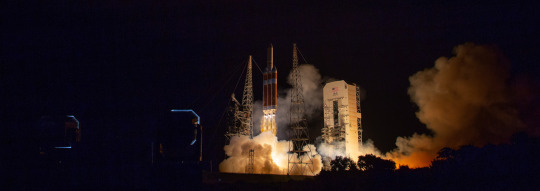
1. Getting to the Sun takes a lot of power
At about 1,400 pounds, Parker Solar Probe is relatively light for a spacecraft, but it launched to space aboard one of the most powerful rockets in the world, the United Launch Alliance Delta IV Heavy. That’s because it takes a lot of energy to go to the Sun — in fact, 55 times more energy than it takes to go to Mars.
Any object launched from Earth starts out traveling at about the same speed and in the same direction as Earth — 67,000 mph sideways. To get close to the Sun, Parker Solar Probe has to shed much of that sideways speed, and a strong launch is good start.
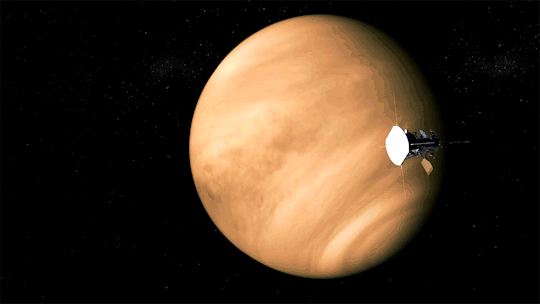
2. First stop: Venus!
Parker Solar Probe is headed for the Sun, but it’s flying by Venus along the way. This isn’t to see the sights — Parker will perform a gravity assist at Venus to help draw its orbit closer to the Sun. Unlike most gravity assists, Parker will actually slow down, giving some orbital energy to Venus, so that it can swing closer to the Sun.
One’s not enough, though. Parker Solar Probe will perform similar maneuvers six more times throughout its seven-year mission!

3. Closer to the Sun than ever before
At its closest approach toward the end of its seven-year prime mission, Parker Solar Probe will swoop within 3.83 million miles of the solar surface. That may sound pretty far, but think of it this way: If you put Earth and the Sun on opposite ends of an American football field, Parker Solar Probe would get within four yards of the Sun’s end zone. The current record-holder was a spacecraft called Helios 2, which came within 27 million miles, or about the 30 yard line. Mercury orbits at about 36 million miles from the Sun.
This will place Parker well within the Sun’s corona, a dynamic part of its atmosphere that scientists think holds the keys to understanding much of the Sun’s activity.
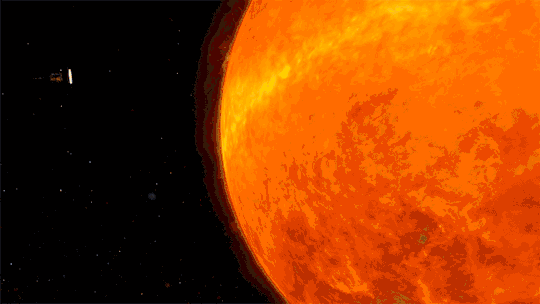
4. Faster than any human-made object
Parker Solar Probe will also break the record for the fastest spacecraft in history. On its final orbits, closest to the Sun, the spacecraft will reach speeds up to 430,000 mph. That’s fast enough to travel from New York to Tokyo in less than a minute!

5. Dr. Eugene Parker, mission namesake
Parker Solar Probe is named for Dr. Eugene Parker, the first person to predict the existence of the solar wind. In 1958, Parker developed a theory showing how the Sun’s hot corona — by then known to be millions of degrees Fahrenheit — is so hot that it overcomes the Sun’s gravity. According to the theory, the material in the corona expands continuously outwards in all directions, forming a solar wind.
This is the first NASA mission to be named for a living person, and Dr. Parker watched the launch with the mission team from Kennedy Space Center in Florida.

6. Unlocking the secrets of the solar wind
Even though Dr. Parker predicted the existence of the solar wind 60 years ago, there’s a lot about it we still don’t understand. We know now that the solar wind comes in two distinct streams, fast and slow. We’ve identified the source of the fast solar wind, but the slow solar wind is a bigger mystery.
Right now, our only measurements of the solar wind happen near Earth, after it has had tens of millions of miles to blur together, cool down and intermix. Parker’s measurements of the solar wind, just a few million miles from the Sun’s surface, will reveal new details that should help shed light on the processes that send it speeding out into space.
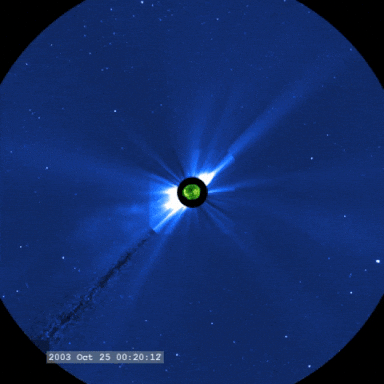
7. Studying near-light speed particles
Another question we hope to answer with Parker Solar Probe is how some particles can accelerate away from the Sun at mind-boggling speeds — more than half the speed of light, or upwards of 90,000 miles per second. These particles move so fast that they can reach Earth in under half an hour, so they can interfere with electronics on board satellites with very little warning.

8. The mystery of the corona’s high heat
The third big question we hope to answer with this mission is something scientists call the coronal heating problem. Temperatures in the Sun’s corona, where Parker Solar Probe will fly, spike upwards of 2 million degrees Fahrenheit, while the Sun’s surface below simmers at a balmy 10,000 F. How the corona gets so much hotter than the surface remains one of the greatest unanswered questions in astrophysics.
Though scientists have been working on this problem for decades with measurements taken from afar, we hope measurements from within the corona itself will help us solve the coronal heating problem once and for all.

9. Why won’t Parker Solar Probe melt?
The corona reaches millions of degrees Fahrenheit, so how can we send a spacecraft there without it melting?
The key lies in the distinction between heat and temperature. Temperature measures how fast particles are moving, while heat is the total amount of energy that they transfer. The corona is incredibly thin, and there are very few particles there to transfer energy — so while the particles are moving fast (high temperature), they don’t actually transfer much energy to the spacecraft (low heat).
It’s like the difference between putting your hand in a hot oven versus putting it in a pot of boiling water (don’t try this at home!). In the air of the oven, your hand doesn’t get nearly as hot as it would in the much denser water of the boiling pot.
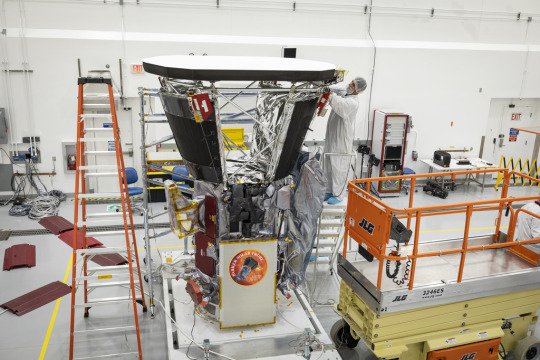
10. Engineered to thrive in an extreme environment
Make no mistake, the environment in the Sun’s atmosphere is extreme — hot, awash in radiation, and very far from home — but Parker Solar Probe is engineered to survive.
The spacecraft is outfitted with a cutting-edge heat shield made of a carbon composite foam sandwiched between two carbon plates. The heat shield is so good at its job that, even though the front side will receive the full brunt of the Sun’s intense light, reaching 2,500 F, the instruments behind it, in its shadow, will remain at a cozy 85 F.
Even though Parker Solar Probe’s solar panels — which provide the spacecraft’s power — are retractable, even the small bit of surface area that peeks out near the Sun is enough to make them prone to overheating. So, to keep its cool, Parker Solar Probe circulates a single gallon of water through the solar arrays. The water absorbs heat as it passes behind the arrays, then radiates that heat out into space as it flows into the spacecraft’s radiator.
For much of its journey, Parker Solar Probe will be too far from home and too close to the Sun for us to command it in real time — but don’t worry, Parker Solar Probe can think on its feet. Along the edges of the heat shield’s shadow are seven sensors. If any of these sensors detect sunlight, they alert the central computer and the spacecraft can correct its position to keep the sensors — and the rest of the instruments — safely protected behind the heat shield.
Read the web version of this week’s “Solar System: 10 Things to Know” article HERE.
Make sure to follow us on Tumblr for your regular dose of space: http://nasa.tumblr.com.
2K notes
·
View notes
Video
youtube
Foo Fighters - Let There Be Rock (AC/DC cover) - Corona Capitol, Mexico City, Mexico (18/11/2017)
0 notes
Photo

Check out this playlist on @8tracks: The Best of Rock by amanduh46.
#8tracks#playlist#the rolling stones#60's and 70's#classic rock#The Rolling Stones#Pink Floyd#Bob Dylan
1 note
·
View note
Audio
#NP #NewMusic #HeartFans Check this out! - Get Loud by Roadcase Royale via #soundcloud
0 notes
Link
Not the best way to respond to a negative review ;)
0 notes
Photo

Check out this playlist on @8tracks: Happy Anniversary My Love! by bradleygt89.#FBF #TBT - depending on your time zone ;)
2 notes
·
View notes
Photo

Check out this playlist on @8tracks: Hard Rocking Work Out by bradleygt89.
#8tracks#playlist#working out#guns n’ roses#trooper#rage against the machine#argent#Trooper#Mötley Crüe#Sammy Hagar
0 notes
Text
Social Media Marketing 80-20 Rule
Social Media Marketing 80-20 Rule
Social Media Marketing 80-20 Rule Why it still matters to listen more than you talk, even on Social Media.
Have you heard of the 80-20 Rule? There are many reasons to engage in social media if you are a business owner or a professional, and often times we forget or do not know of the basic rule of engagement. From having a place for potential prospects to find out more about your products or…
View On WordPress
0 notes
Link
Being Proactive in a Reactive Society
When you hear the word “proactive” what is the first thing that comes to mind? Is it ‘taking initiative’, ‘being prepared’, ‘taking responsibility’ or something different? In his book, The 7 Habits of Highly Effective People, the late Dr. Stephen Covey makes a point that proactivity is not merely taking initiative, but additionally it is the notion that as humans we must take responsibility for our own lives....
0 notes
Video
youtube
Nice :) (via https://www.youtube.com/watch?v=fftYQqGAi-I)
0 notes
Photo
Awesome :)

The Edge of Space - flying in a U-2 Spy Plane. https://maptia.com/chrismichel/stories/the-edge-of-space
43 notes
·
View notes
Link
Tayloe Marketing and Consulting, LLC is proud to offer a wide variety of Social Media Management, Customer Retention, and Email Marketing services for small business owners, sole proprietors, and service professionals.
0 notes
Link
Digital signage adds exposure to your current specials or offerings, increases brand recognition, and builds customer loyalty. We have partnered with a digital signage company to assist you with continuously reaching your target market.
0 notes
Link
If you are interested in pre-ordering Catherine’s book, “Brownham, A History of the Brown Henderson property on Lake Michigan”, please fill out the form below. She looks forward to sharing this amazing experience with you.
0 notes
Link
Providing personalized and award winning design and event planning services to the entire Sarasota area including: Siesta Key, Longboat Key, Casey Key, Osprey, Nokomis, Venice, Lakewood Ranch, and more.
0 notes